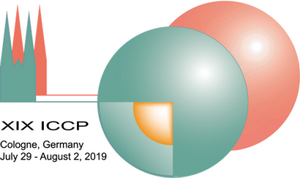
Since then, the International Carbon and Permian Congress has been held every four years in different countries of the world and has been a major event in the world's geological science. This year, the Congress hosted the Institute of Geology and Mineralogy of Cologne University. Founded in 1388, this university is one of the oldest in Western Europe. The meetings were held in one of the departments of this university - the Institute of Geology and Mineralogy, which is located in a new building near the center.
Cologne - the fourth largest metropolis in western Germany, lies (locates) on the banks of the Rhine river and appeared on the site of an ancient Roman settlement. In the central part of the city, modern buildings are organically incorporated into ancient buildings. The most famous building among the latter is the famous Cologne Cathedral, listed on the UNESCO World Heritage List. It is a place of pilgrimage for people from all over the world. Admission to the cathedral is free, allowed to take pictures. It is striking the grandeur of the sandstone-built structure that survived the devastating bombing of World War II. Incredible atmosphere that is difficult to convey with words reigns both inside and outside the cathedral.
The public transport movement in Cologne is perfectly organized. From Table at stops can synchronize clocks.
But it seems that the city's main mode of transport is bicycle. For this type of transport there are special tracks everywhere, bicycles here occur almost every step of the way. There are many runners of different ages and genders in the parks and gardens, and impressive numbers of runners are arranged on weekends.
Scientists from almost all countries in Europe, Asia, Africa, Australia, North and South America, where carbon and Permian deposits are common, have participated in the Congress. In addition to Germany, representative delegations came from China, Russia, France, Spain, Belgium, as well as Kazakhstan, the United Kingdom, Poland, Argentina, Mexico, the USA, South Africa, India and many other countries.
The work of the forum was conducted in the following main scientific areas: stratigraphy, paleontology, tectonics, facies and paleogeography, basin analysis, economic geology. Paleontological reports related to different groups of fossil fauna and flora. Stratigraphic issues, in addition to speeches and posters, were also discussed at meetings of the International Coal and Perm Stratigraphy Subcommittees.
A considerable number of reports have been related to lithology and geochemistry, including isotope geochemistry, as well as reconstructions of the paleoclimate and the position of continents and oceans at various stages of geological history.
Researchers from Argentina, South Africa and India, which described Gondwana coal basins, including prospects for the extraction of unconventional hydrocarbons, were devoted to the fossil minerals.
A new focus has been the discussion of deep thermal energy, which is concentrated, in particular, in the coal deposits of Northwestern Europe. A few months ago, the European Union adopted the four-year Interreg project Roll-out of Deep Geothermal Energy in NWE (DGE-ROLLOUT) with a total budget of € 18.7 million. The program envisages a comprehensive study of the coal deposits of France, Belgium, Germany and the Netherlands in order to further exploit deep energy sources for industrial enterprises and the general public. The experience of Western European countries may be useful for Ukraine, since its eastern part (DZ) has a very similar geological structure, but the potential of deep geothermal energy has not yet been sufficiently studied.
References:
- 19th International Congress on the Carboniferous and Permian, Cologne, July 29 – August 2, 2019. Abstracts // Kölner Forum Geol. Paläont., 23 (2019). – 345 p.